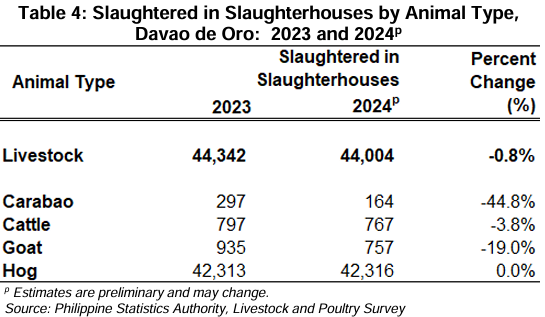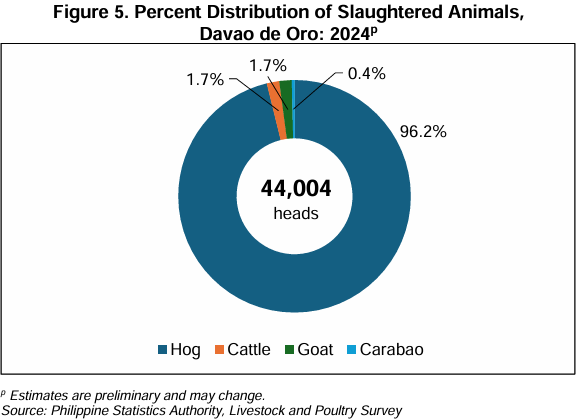Livestock and poultry production in Davao de Oro drops by 2.0 percent
Davao de Oro's annual volume of livestock and poultry production was estimated at 24,958.13 metric tons, which represents a 2.0 percent decrease from the 25,461.53 metric tons recorded in 2023. (Table 1)
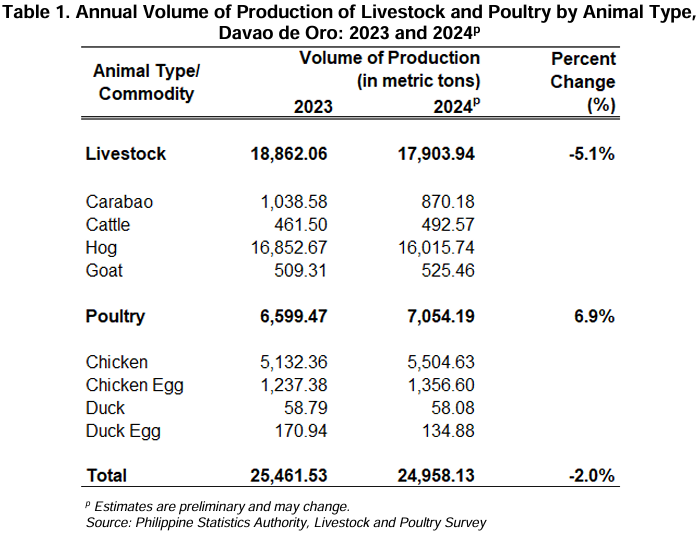
Livestock production drops by 5.1 percent
For livestock industry, the annual volume of production in 2024 was estimated at 17,903.94 metric tons (liveweight), reflecting a 5.1 percent decline from 18,862.06 metric tons in 2023. This figure includes the production volumes of carabao, cattle, hogs, and goats. The overall decrease was mainly driven by the 5.0 percent decline in hog production and 16.2 percent drop in carabao production. However, both cattle and goat production showed positive growth, increasing by 6.7 percent and 3.2 percent, respectively. (Table 2 and Figure 1)
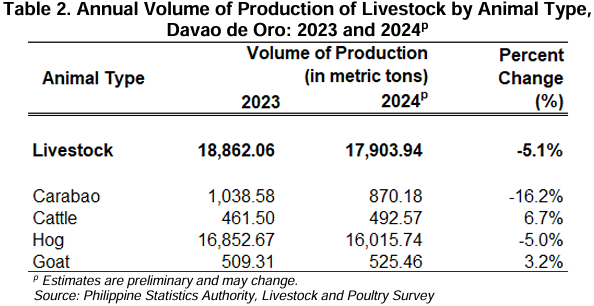
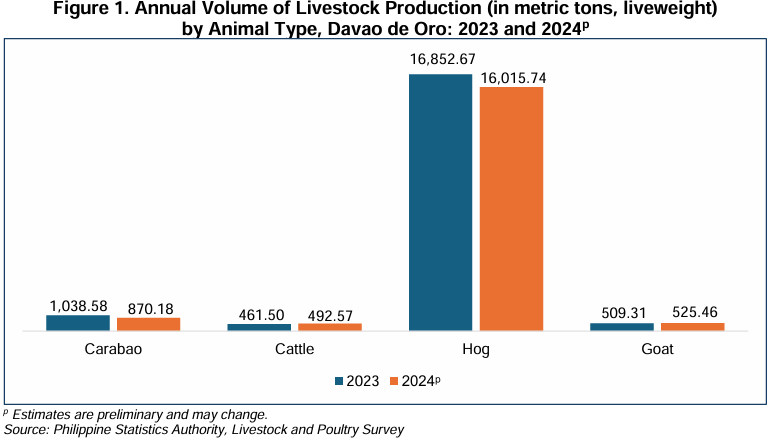
Hogs contributed the largest share of total livestock production at 89.5 percent (16,015.74 metric tons), followed by carabao at 4.9 percent (870.18 metric tons) and goat at 2.9 percent (525.46 metric tons). Cattle had the smallest share, accounting for 2.8 percent (492.57 metric tons). (Table 2 and Figure2)
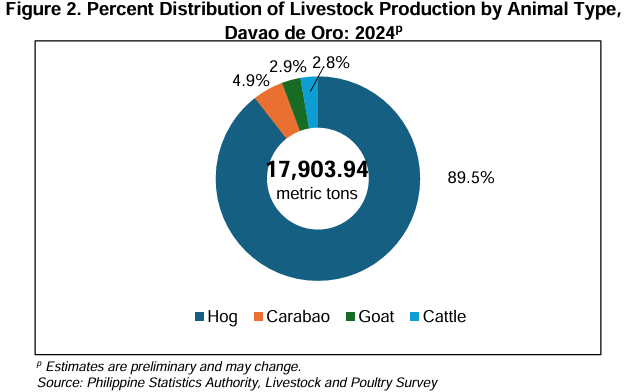
Poultry production increased by 9.8 percent
The province’s annual poultry production in 2024 was estimated at 7,054.19 metric tons, reflecting a 6.9 percent increase from 6,599.47 metric tons recorded in 2023. This total encompasses the production volumes of chicken, chicken egg, duck, and duck egg. Notably, chicken and chicken egg production rose by 7.3 percent and 9.6 percent, respectively. In contrast, duck and duck egg production declined by 1.2 percent and 21.1 percent, respectively. (Table 3 and Figure 3)
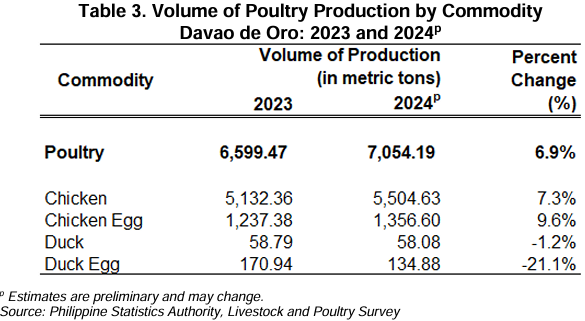
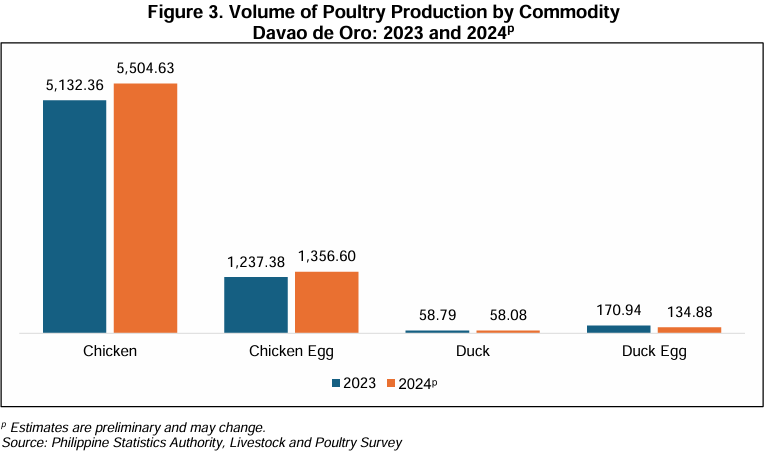
In terms of contribution to the province’s total poultry production, chicken had the largest share, producing 5,504.64 metric tons, which accounted for 78.0 percent of the total. This was followed by chicken egg at 1,356.60 metric tons, contributing 19.2 percent. Meanwhile, duck egg contributed 1.9 percent (134.88 metric tons), and duck accounted for 0.8 percent (58.08 metric tons). (Table 3 and Figure 4)
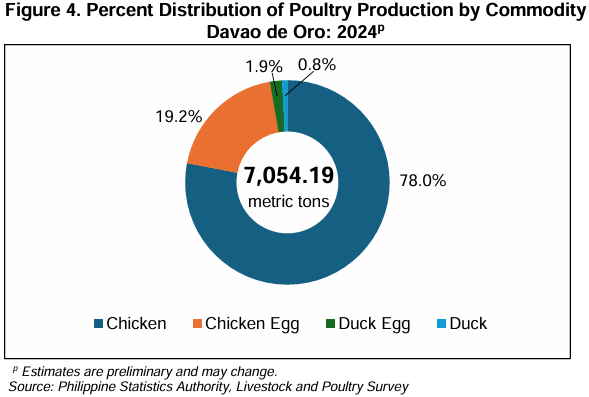
Majority of the slaughtered animals in slaughterhouses were hogs
In 2024, a total of 44,004 animals were slaughtered in slaughterhouses across Davao de Oro, reflecting a slight decrease of 0.8% from 44,342 heads in 2023.
Hogs accounted for the majority of the total animals slaughtered, with 42,316 heads (96.2%). Cattle followed with 767 heads (1.7%), while goats recorded 757 heads (1.7%). Carabao had the lowest count, with only 164 heads, contributing 0.4% to the total. (Table 4 and Figure 5)
